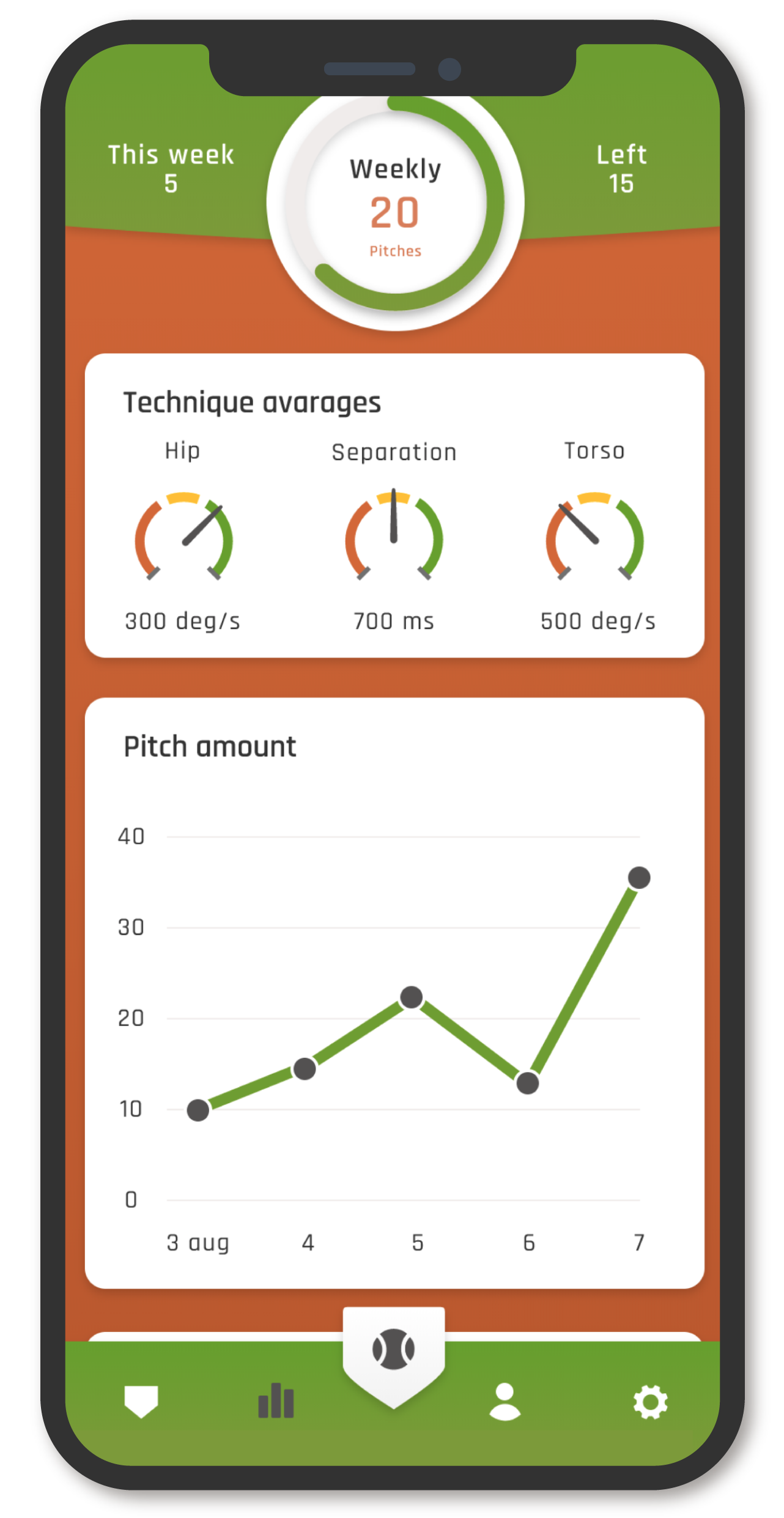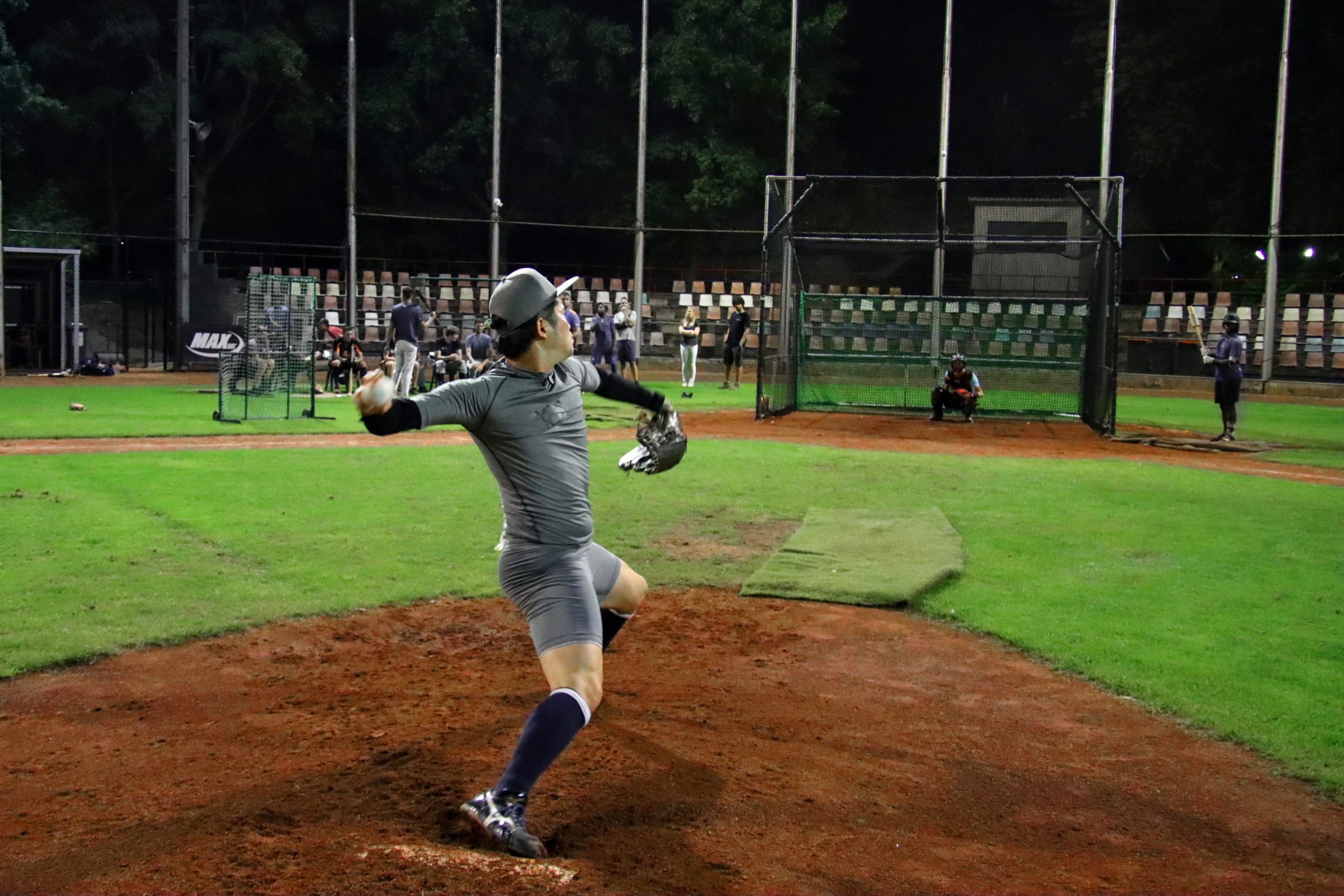
3D MECHANICS
DIGITAL COACH
Reach your maximal potential with the use of real-time feedback in your daily training to improve your body mechanics. With the PITCHPERFECT app you always have your digital coach by your side.
With detailed information of your mechanics you can improve the sequencing of your trunk and pelvis rotation to ensure consistent and fast pitching.


SEQUENTIAL ROTATIONS
During a perfect pitching motion, the lower- and upper body rotate in a sequential order.
To throw fast and reduce injury risk, you need to rotate each body part quickly and optimize the timing between all the segments.
TIMING OF THE BODY

GOOD TIMING
Optimal timing is critical in pitching at all levels. A good timing of your upper and lower body means that your are using the full potential of your body to throw heat. The energy is distributed through the body to ensure reliable and consistent pitching.
To prevent injuries, it is important to throw efficiently. By optimizing the connection between upper and lower body, the forces are distributed equally over your body and therefore your shoulder and elbow are protected against sudden overload.
In pitching, you need a sequential rotation of the lower and upper body. The time between peak rotational velocity of lower and upper body is called the separation time. An optimal separation time is approximately 5 – 50 milliseconds.
TOO EARLY
A negative timing means that the trunk rotates earlier than the hips. You are rotating your upper body to early.
TOO LATE
The trunk follows to slow after the hips rotate. Try to open your hips later and follow with more explosivity after landing your front leg.

STORIES
Share your training stories at our socials!
HIP ROTATION SPEED

GOOD ROTATION SPEED
The maximal hip rotation speed of elite pitchers is usually between 600-900 °/s. The big muscles in your legs can create a lot of energy. This energy is tranferred to the upper body by moving forward and rotating the hips. The hip rotation is not as fast as the trunk but contains a lot of energy and therefore is very important to throw fast and consistent.
A much higher rotation velocity might not be very efficient. For the optimal efficiency also check your timing!
MEDIUM ROTATION SPEED
A medium rotation speed, between 400-600 °/s, usually shows a lack of use of the lower body in the delivery. Lower than average hip rotation at the start of the bullpen could happen because the lower body is not activated enough. Try extending your warmup! If you see your hip rotation drop during the bullpen session, it could mean fatigue.
You can also have a medium hip rotation speed when the windup phase of the pitch is not explosive enough. Not enough energy is created with the lower body to set-up the trunk for high rotation velocities. This could be improved by training explosiveness of the lower body. You could also slightly adjust the wind-up phase to create more space to accelerate up to high velocities.
Overall lack in stability of the legs could also lead to not rotating enough from the stance leg or towards the landing leg. When that happens you might have the explosiveness but not the stability to put your energy into the pitch.
LOW ROTATION SPEED
Slow rotation of the hips means that almost no energy is put into the system and makes consistent and fast throwing impossible. If you throw close to your maximum throwing velocity while you have a low hip rotation speed, you might overuse your arm and have an increased risk to get a shoulder injury during pitching.
A very low rotation velocity of the hips doesn’t usually happen when you are pitching on a mound. However, make sure to measure your flatgrounds and other throwing exercises to make sure you are always practicing with the right technique.
TRUNK ROTATION SPEED

GOOD ROTATION SPEED
Rotation velocity of the trunk for pitchers is usually around 1200 °/s. For players in high school, the average rotation velocity is usually around 1000 °/s.
Optimal rotation velocity of the trunk differs between players depending on body type. Use the direct feedback to learn a consistent delivery pattern.
If you have a much higher rotation velocity, you might not use your body optimally. Try to optimize your timing.
MEDIUM ROTATION SPEED
A medium rotation speed of the trunk could be caused by an overall lack of explosivity and technique. Try stying closed with your upper body for a longer time to make rotation of the trunk easier to achieve.
LOW ROTATION SPEED
Try working on your overall explosivity and arm path.